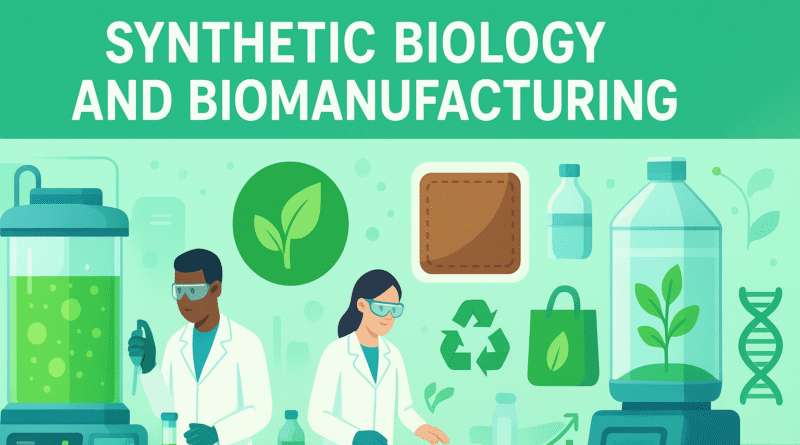Synthetic Biology and Biomanufacturing for a Sustainable Future
Title: Environmental & Applied Biology: Synthetic Biology and Biomanufacturing for a Sustainable Future
Introduction
In today’s world, synthetic biology and biomanufacturing are reshaping how we produce materials, medicines, and even energy-all while protecting the planet. These advanced biological technologies are driving a green revolution by replacing harmful petrochemicals, reducing waste, and enhancing carbon sequestration.
From engineered microorganisms to lab-grown materials, environmental and applied biology is bridging innovation and sustainability like never before.
What Is Synthetic Biology?
Synthetic biology involves designing and engineering living organisms, such as bacteria or yeast, to perform specific functions like creating biodegradable plastics, renewable fuels, or even therapeutic proteins.
Scientists modify an organism’s genetic code to enable it to produce sustainable bioproducts that traditionally came from petroleum-based sources. This process reduces carbon emissions and helps build a more eco-friendly industrial ecosystem.
The Rise of Biomanufacturing
Biomanufacturing uses living systems to produce valuable products at scale — from bio-based plastics to clean chemicals, enzymes, and pharmaceuticals.
By using renewable feedstocks like sugar, agricultural waste, or algae, biomanufacturing offers an alternative to fossil fuels and minimizes industrial pollution.
Some exciting innovations include:
Biodegradable Plastics: Microbes engineered to produce PHA and PLA, replacing conventional plastics.
Lab-Grown Leather & Fabric: Sustainable, cruelty-free alternatives to animal-based and synthetic materials.
Biopharmaceuticals: Microorganisms producing complex drugs like insulin and monoclonal antibodies.
These advancements show how biotechnology and sustainability can work hand in hand to create a circular bioeconomy.
Sustainable Bioproduction: A Greener Industrial Model
Traditional industries rely heavily on petroleum and produce significant waste and carbon emissions. Sustainable bioproduction flips that model, it uses microbial factories that consume renewable resources and emit minimal waste.
By using engineered yeast, bacteria, and algae, scientists can now produce:
Eco-friendly biofuels for transportation
Renewable materials for packaging and textiles
Plant-based proteins and supplements for food industries
This shift supports global carbon neutrality goals and promotes green innovation across sectors like energy, agriculture, and healthcare.
Carbon Sequestration: Nature’s Climate Solution
Another major area of environmental biotechnology is carbon sequestration — capturing and storing atmospheric CO₂ to combat climate change.
Researchers are now engineering plants and microbes with enhanced carbon-capturing abilities. These organisms absorb more carbon dioxide and convert it into useful compounds or store it safely in soil and biomass.
Such bio-based carbon solutions are essential to achieving net-zero emissions and preserving ecological balance.
Future of Environmental & Applied Biology
The future of synthetic biology and biomanufacturing holds immense potential. With continuous innovation, we can look forward to:
Fully biodegradable materials replacing plastics
Carbon-negative production systems
Smart biofactories using AI and automation for precision bioengineering
Greater global collaboration for sustainable industrial transitions
As environmental and applied biology continues to evolve, it’s paving the way for a cleaner, safer, and more resilient planet.
Conclusion
Synthetic biology and biomanufacturing are not just scientific breakthroughs — they’re the foundation of a sustainable bio-based future. By engineering life for sustainability, humanity can reduce dependence on fossil fuels, tackle climate change, and create eco-innovations that benefit both people and the planet.
Together, science and sustainability can build a greener tomorrow.




